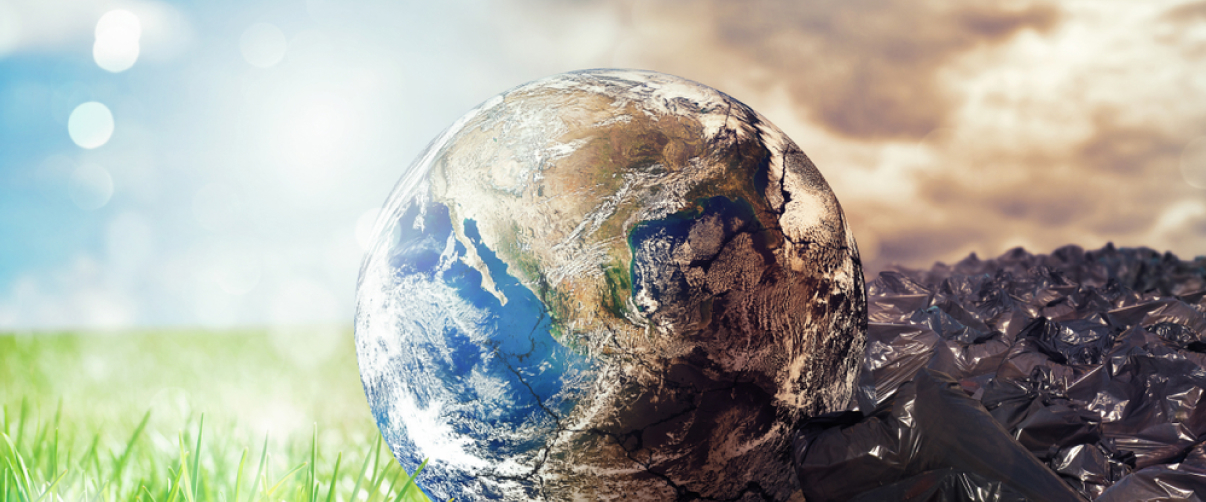Plastic pollution and climate change are two of the most pressing environmental crises of our time. While they are often discussed separately, the intertwined nature of these issues reveals a connection that cannot be overlooked. Understanding how plastic pollution affects climate change is crucial in developing effective solutions to protect our planet.
How Plastic Pollution Affects Climate Change – A Link We Can’t Ignore

The Fossil Fuel Foundation of Plastics
Plastics are almost entirely derived from fossil fuels like oil, coal, and natural gas. This means that the production of plastics is deeply embedded in the fossil fuel economy, contributing significantly to greenhouse gas emissions throughout their lifecycle. From extraction to manufacturing, each stage releases substantial amounts of carbon dioxide and other harmful gases into the atmosphere.
Emissions Throughout the Plastic Lifecycle
The environmental impact of plastics doesn’t end with production. Disposal methods such as incineration and landfilling further contribute to greenhouse gas emissions. In 2019 alone, plastic production and incineration emitted over 850 million tons of greenhouse gases. If current trends continue, these emissions could reach 1.34 gigatons per year by 2030, comparable to the emissions from 300 coal-fired power plants.
Impacts on Marine Ecosystems and the Carbon Sink
Plastic pollution doesn’t just clutter our oceans; it also disrupts the ocean’s ability to act as a carbon sink. Microplastics are ingested by plankton and other marine organisms essential for carbon sequestration. This disruption reduces the ocean’s capacity to absorb carbon dioxide from the atmosphere, exacerbating global warming.
The Vicious Cycle of Climate Change and Plastic Degradation
Climate change accelerates the degradation of plastics, leading to the formation of microplastics and the release of hazardous chemicals. Rising temperatures and increased moisture levels intensify this process, creating a vicious cycle where plastic pollution and climate change fuel each other. The result is a magnification of their combined impacts on environmental and human health.
The Oil Industry’s Pivot to Plastics
As demand for fossil fuels declines in sectors like energy and transportation, the oil industry is increasingly investing in plastic production. By 2040, plastics are expected to account for 95% of the growth in oil demand. This strategic shift not only perpetuates reliance on fossil fuels but also undermines efforts to reduce greenhouse gas emissions.
Challenges with Recycling and Waste Management
While recycling is often touted as a solution to plastic pollution, the reality is that only about 9% of plastics are recycled globally. Technical barriers, high costs, and inefficient systems limit the effectiveness of recycling programs. As a result, most plastic waste ends up in landfills or the environment, where it continues to emit greenhouse gases and harm ecosystems.
Towards Integrated Solutions
Addressing the linked crises of plastic pollution and climate change requires integrated solutions. Transitioning to a circular economy that prioritizes reuse, recycling, and sustainable alternatives is essential. Policies like Extended Producer Responsibility (EPR) hold manufacturers accountable for the entire lifecycle of their products, encouraging reductions in plastic production and waste.
Global Efforts and Policies
International cooperation is crucial in tackling these global challenges. Initiatives such as the United Nations Environment Programme’s (UNEP) global assessment highlight the need for immediate action. Furthermore, discussions around a global plastics treaty aim to align climate goals with efforts to reduce plastic pollution, signaling a move towards unified global strategies.
Individual Actions Make a Difference
While systemic change is vital, individual actions also play a significant role. By reducing our reliance on single-use plastics and supporting environmentally friendly alternatives, consumers can drive demand for sustainable products. Advocacy and education are key in promoting awareness and encouraging collective action against plastic pollution and climate change.
Conclusion
The connection between plastic pollution and climate change is a critical link we can’t ignore. By understanding how these issues are intertwined, we can develop comprehensive strategies to address them together. It is imperative that governments, industries, and individuals collaborate to reduce plastic production, embrace sustainable practices, and mitigate the impacts on our environment. Only through coordinated efforts can we hope to safeguard our planet for future generations.











